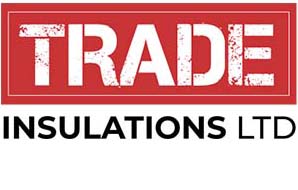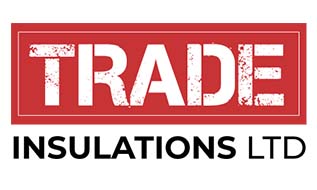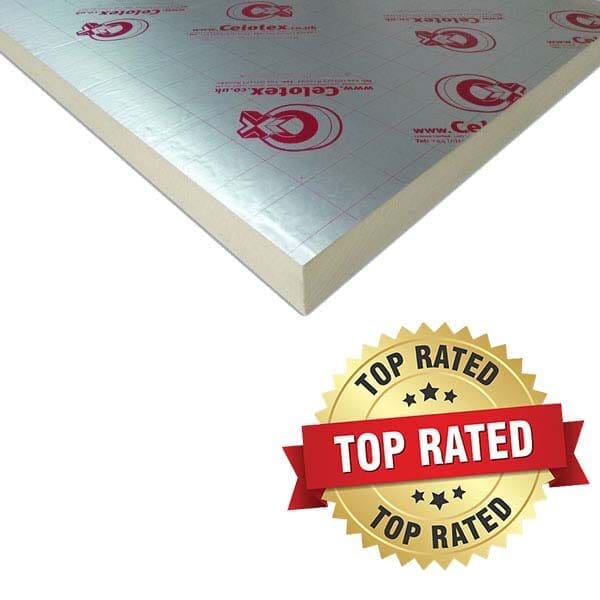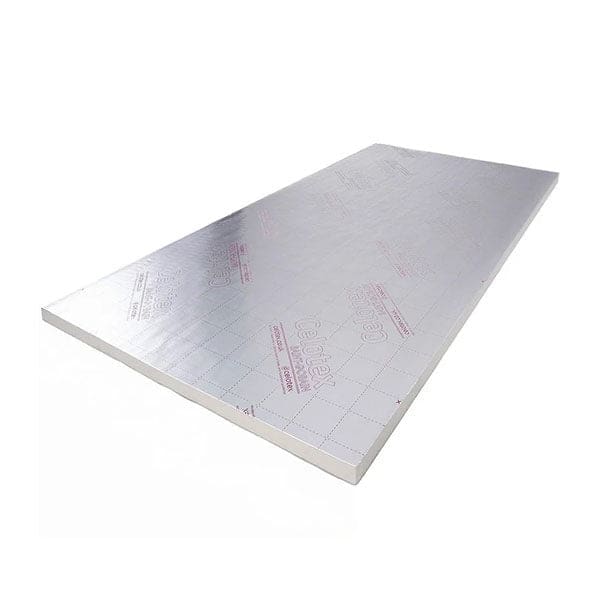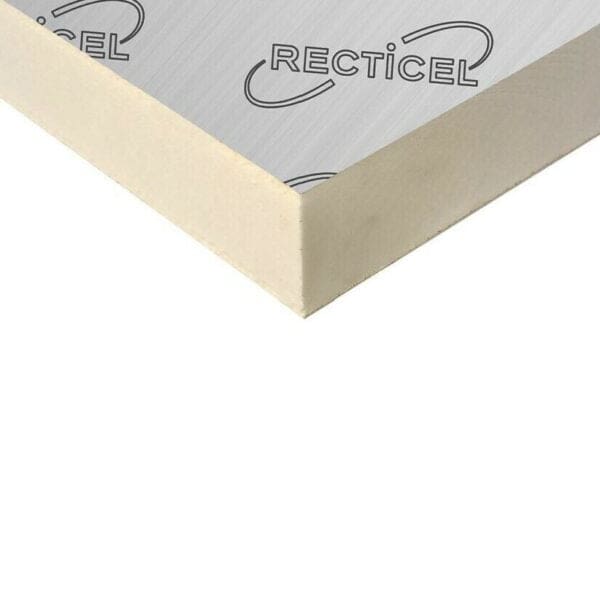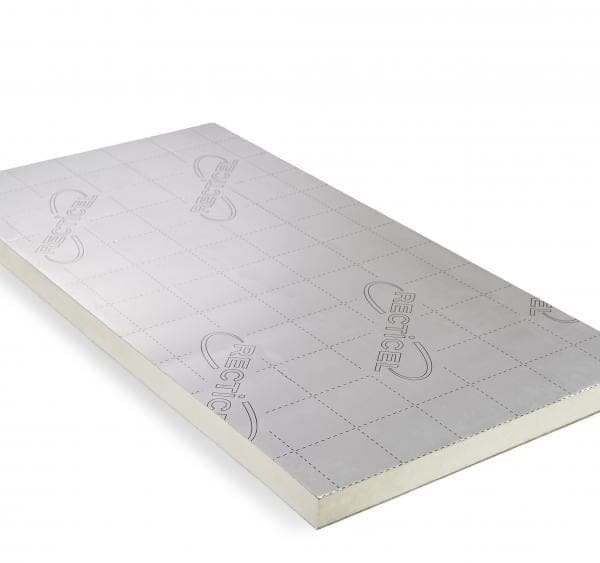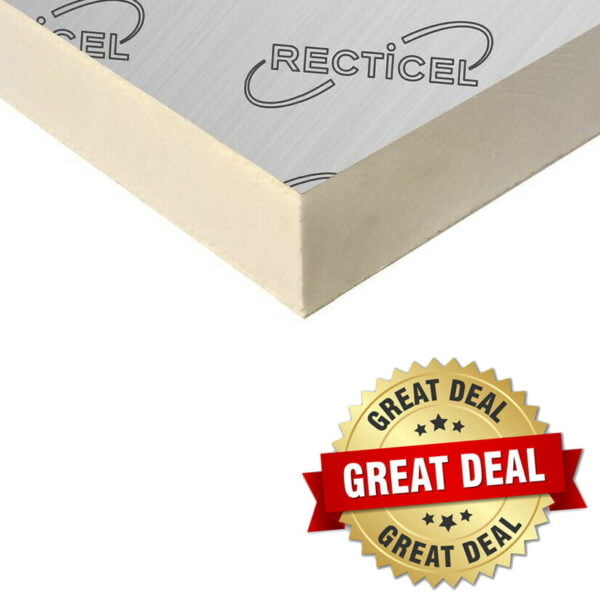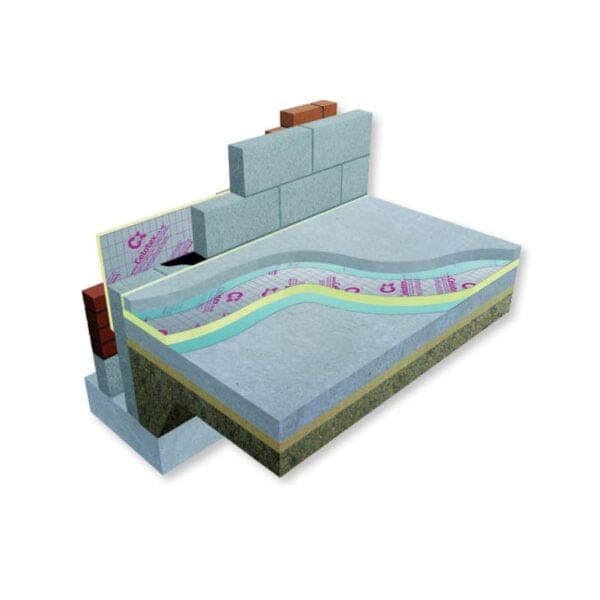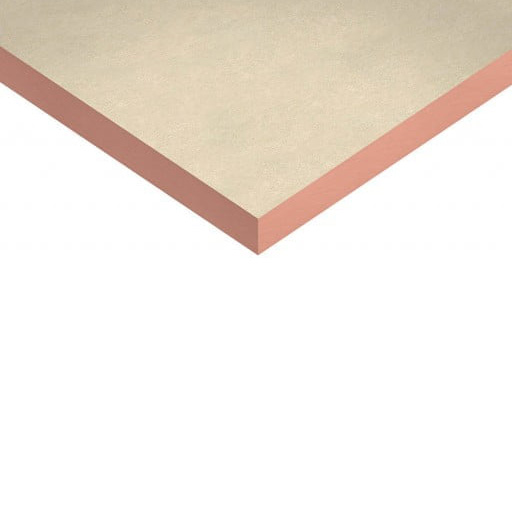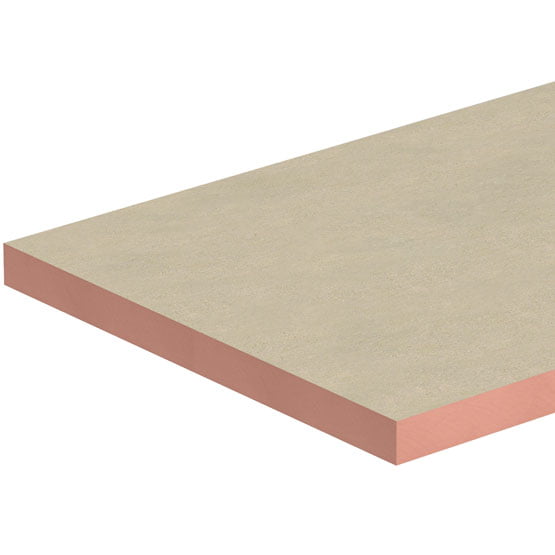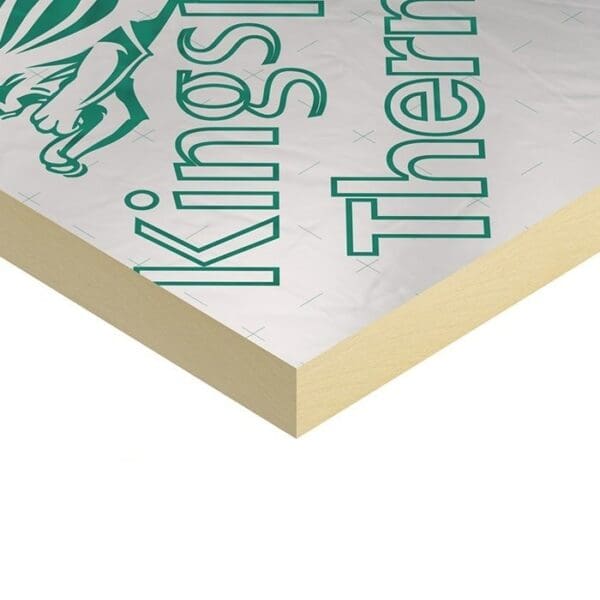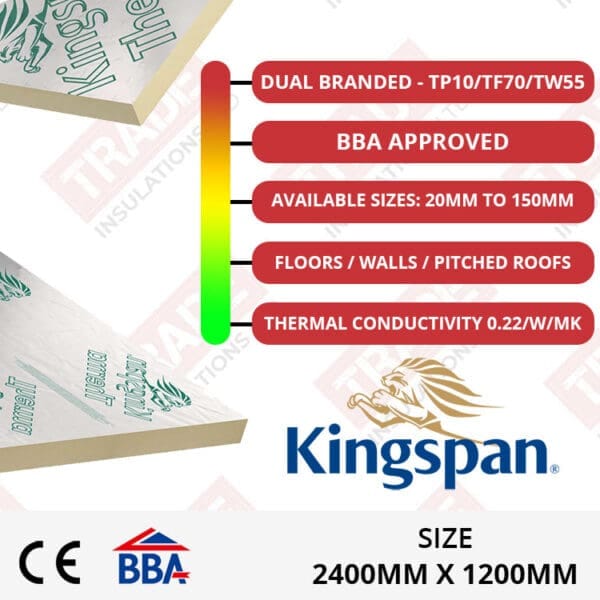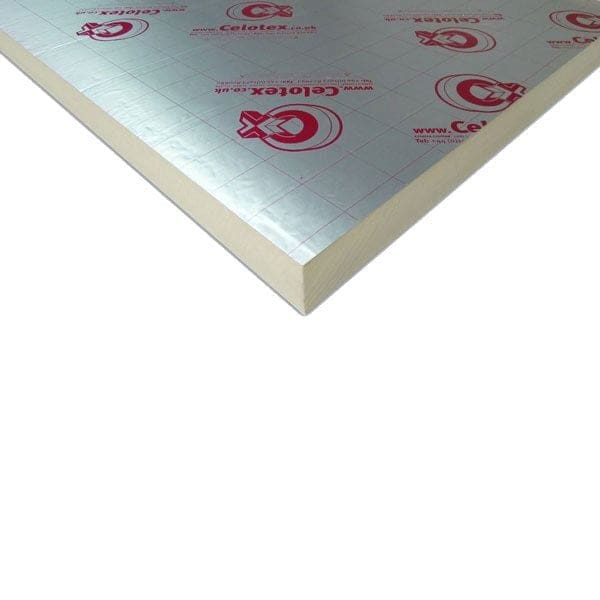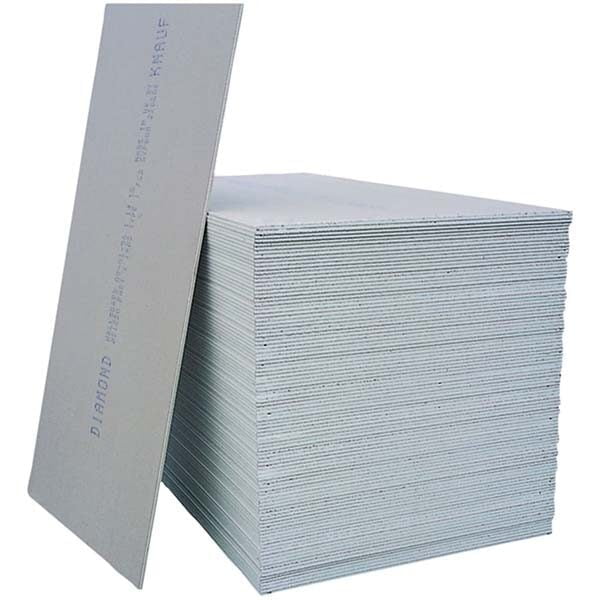Concrete Floor Insulation
Concrete floor insulation is an insulation material designed to be installed in concrete floor applications. The insulation materials for floor insulation are generally rigid boards that hold a high compression strength. Concrete has insulation properties however during the winter months it can be extremely cold and insulation will need to be installed to improve the thermal quality of the floor. This applies regardless of whether you have a garage or a basement space underneath your home. The insulation will make the area more comfortable on the feet and temperature controlled.
Showing 1–16 of 104 results
Celotex 100mm PIR Insulation Board – GA4100 (2400mm x 1200mm x 100mm) 2.88m2
Original price was: £39.99.£29.25Current price is: £29.25.100mm Recticel GP Insulation Boards (1200x2400mm) – 2.88m2
Original price was: £39.99.£29.25Current price is: £29.25.120mm Celotex Insulation Board – XR4120 (2400mm x 1200mm x 120mm) 2.88m2
Original price was: £51.99.£35.85Current price is: £35.85.25mm Recticel GP Insulation Boards (1200x2400mm) – 2.88m2
Original price was: £18.29.£11.15Current price is: £11.15.50mm Celotex Insulation Board – GA4050 (2400mm x 1200mm x 50mm) 2.88m2
Original price was: £25.15.£17.25Current price is: £17.25.50mm Recticel GP Insulation Boards (1200x2400mm) – 2.88m2
Original price was: £25.15.£17.25Current price is: £17.25.70mm Recticel GP Insulation Boards (1200x2400mm) – 2.88m2
Original price was: £34.89.£23.13Current price is: £23.13.75mm Celotex Insulation Board – GA4075 (2400mm X 1200mm X 75mm) 2.88m2
Original price was: £34.99.£23.86Current price is: £23.86.Kingspan Kooltherm K103 100mm Insulation Floorboard (2400mm x 1200mm) – 8.64m2 pack
Original price was: £337.58.£281.32Current price is: £281.32.Kingspan Thermafloor Insulation Board TF70 – 100mm – 2400x1200mm – 8.64m2 pack
Original price was: £155.29.£129.56Current price is: £129.56.150mm Celotex Insulation Board – XR4150 (2400mm x 1200mm x 150mm) 2.88m2
Original price was: £61.50.£43.58Current price is: £43.58.70mm Celotex Insulation Board – GA4070 (2400mm x 1200mm x 70mm) 2.88m2
Original price was: £34.89.£23.13Current price is: £23.13.80mm Celotex Insulation Board – GA4080 (2400mm X 1200mm X 80mm) 2.88m2
Original price was: £39.40.£26.78Current price is: £26.78.80mm Recticel GP Insulation Boards (1200x2400mm) – 2.88m2
Original price was: £39.40.£26.78Current price is: £26.78.90mm Recticel GP Insulation Boards (1200x2400mm) – 2.88m2
Original price was: £42.95.£29.28Current price is: £29.28.Kingspan Thermafloor Insulation Board TF70 – 70mm – 2400x1200mm – 11.52m2 pack
Original price was: £183.83.£137.06Current price is: £137.06.Insulation for concrete
If your home is laid directly onto the ground, then insulation materials will prevent heat loss and the cold coming from the underground from penetrating inside the property.
When insulating a garage or basement it will make warmer spaces, provide protection from damp and moisture, and provide comfort, it will also protect the upper floors, since there will still be some heat/cold exchange between the basement or garage space and the rest of your home.
Benefits of concrete floor insulation
- More comfortable living space
- Save money on energy bills
- Prevents the room from overheating
- Help to maintain internal temperatures
- No maintenance required
- Reduce draughts
- This product brings your house up to date and improve your EPC ratings.
Insulating a concrete floor
Take into consideration if you are installing your insulation materials on top of the concrete, construction elements such as ceiling heights, and skirting boards will need to be removed.
The type of building will affect the insulating materials required. If installing within a building that expected to withstand heavy loads, the insulation material will have to have a high compression strength whereas a residential building will not hold heavy duty materials.
It is always recommended to install a damp proof membrane (DPM) between the solid floor and the insulation. The DPM can reduce the risks of the insulation being damaged. When insulation is made damp, it can reduce its quality and cause issues. If damp reaches the insulation, it can affect your home and cause further damage to the property.
When installing insulation on a concrete floor, the insulation can either go above or below the concrete.
Installing insulation above the concrete floor is beneficial as the materials can be placed onto the floor without relaying or lifting the floor. Additionally, insulation installed above a concrete flooring will help the room to get warmer quicker, however it will also cool down quicker.
When installing insulation on top of the concrete floor, the most common method of installation is to lay the damp proof membrane onto the concrete, followed by the insulation. Then lay moisture-resistant chipboard, or a concrete screed to the top, which is then completed by adding the chosen flooring.
Insulating concrete below the concrete floor is the best recommended form of installation. The concrete absorbs the heat much better and also prevents the room from getting overheated.
When installing insulation below the concrete floor, the most common method of installation involves laying a form of infill over the surface such as sand which will help prevent anything from puncturing through the next layer. a damp proof membrane (DPM) is then laid over the sand, which will make the membrane airtight. The next step is to lay the insulation materials onto the DPM, the concrete can then be laid followed by the chosen flooring.
Concrete Floor Insulation Products
Recticel PIR Insulation Boards
Recticel Eurothane Insulation Boards are sheets of compact material with insulation properties, which can be added to your roof, loft, walls, ceilings, and floor to help improve the energy efficiency and thermal insulation of your property which can help save money on your energy bills.
- 2400mm x 1200mm
- Thicknesses, 25mm – 160mm
- Thermal Conductivity: 0.022W/mK
- Material: Polyisocyanurate (PIR), Composite Foil
Kingspan Thermafloor TF70
Kingspan Thermafloor TF70 is an insulation material specifically designed for floor applications within residential and commercial buildings. Designed with solid concrete and suspended ground floors in mind.
- 2400mm x 1200mm
- Thicknesses, 20mm – 150mm
- Thermal Conductivity: 0.022W/mK
- Material: Polyisocyanurate (PIR), Composite Foil
Kingspan Kooltherm K103
Kingspan Kooltherm K103 Floorboard insulation is conducted of a premium performance insulation board with a fibre-free rigid thermoset phenolic core. The K103 is designed for floor applications.
- 2400mm x 1200mm
- Thicknesses, 25mm – 150mm
- Thermal Conductivity: 0.018W/mK
- Material: Phenolic, Glass Tissue
FAQs
Can you insulate existing concrete floor?
Yes! The simplest way of improving the thermal performance of an existing concrete ground floor is to add insulation over the top of the existing floor. See a basic guide on how to do this above.
Are concrete floors cold in winter?
Yes, A drawback of concrete is that it has little insulating value, and it can feel very cold on winter mornings—unless it has been installed in conjunction with a radiant floor heating system or insulation materials. Carpets, throws, and rugs can help.
Can you insulate a concrete floor and use underfloor heating?
If you are planning on using underfloor heating, then there are a few things to consider, mostly concerning the location of the insulation. You can either choose to install the heating within a creed and the insulation installed above the floor slab or install insulation under the slab, depending on the outcome you expect.
How much does it cost to insulate under a concrete floor?
A 50mm thick layer of proprietary floor insulation such as 50mm Kingspan, Celotex or similar is usually enough to reach and maintain the target U value but this should be checked with a builder or architect first. Insulation sheets should be laid tightly together with the joints staggered to avoid movement. Once you have found out the thickness you require, measure your space to find out how many boards you require. Remember to take labouring costs into consideration.
